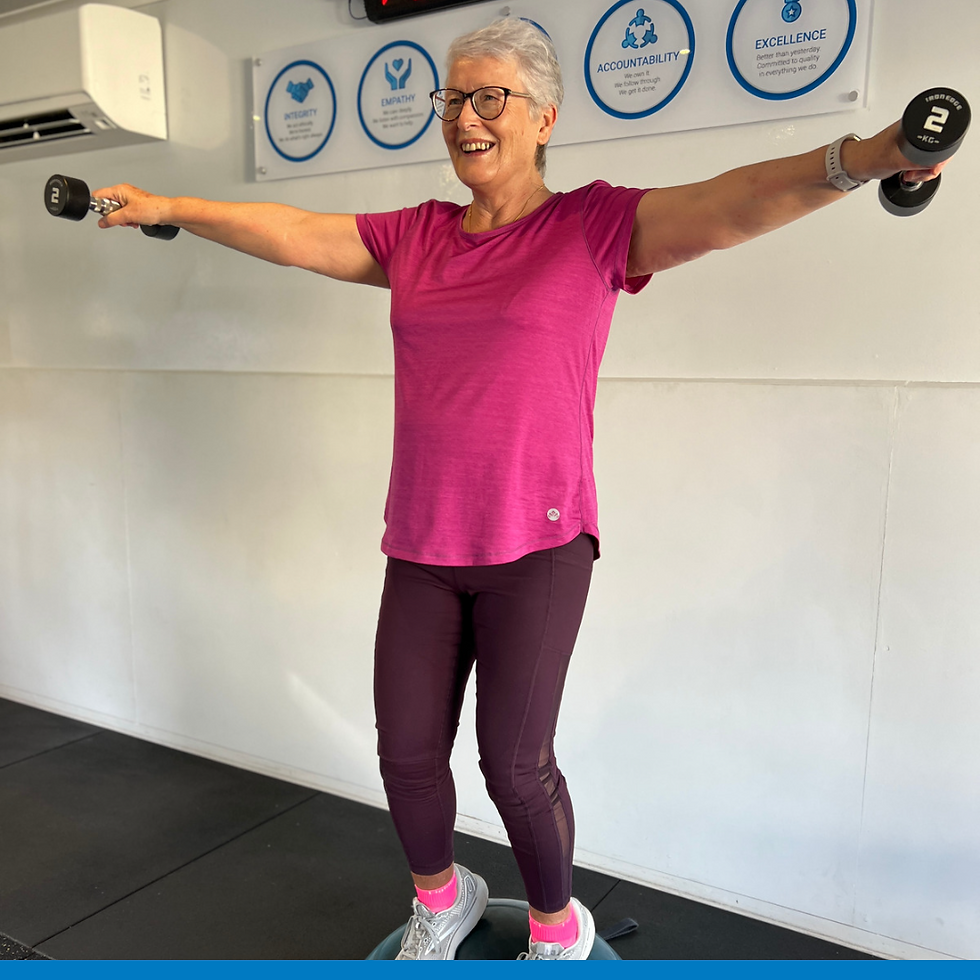Non-Specific Low Back Pain: Causes, Diagnosis, and Exercise as Treatment
- Trent Malcolm
- Mar 4, 2024
- 2 min read
Updated: May 30, 2024
What is Non-Specific Low Back Pain?

Low back pain is a common ailment that affects people of all ages and backgrounds. While some cases of low back pain can be attributed to specific causes such as injury or medical conditions, it is estimated that up to 90% of cases fall under the category of non-specific low back pain. This is a trend we consistently observe at Active One, highlighting the importance of understanding and addressing this prevalent issue.
While the exact cause of non-specific low back pain is often unclear, it is believed to be multifactorial, involving a combination of factors such as muscle strain, ligament sprain, poor posture, and psychological factors like stress and anxiety.
Diagnosing non-specific low back pain typically involves a thorough medical history and physical examination. While imaging studies such as X-rays or MRI scans are useful to rule out other potential causes of the pain, it is important to note that the presence of these abnormalities on imaging does not always correlate with the presence or severity of symptoms. For example, 80% of people over the age of 50 have disk degeneration on imaging without any lower back pain.
Exercise as a Treatment for Non-Specific Low Back Pain
Exercise is widely recognised as a key component in the management of lower back pain. It has been shown to be effective in reducing pain, improving function, and preventing future episodes of pain. Exercise also has positive effects on mental health, reducing stress and anxiety, which are known to contribute to back pain.
At Active One, we offer a range of exercises specifically designed to help alleviate lower back pain and improve overall well-being. Our tailored exercise programs may vary depending on individual factors such as age, fitness level, and specific causes of pain, but generally include:
Strength and Flexibility Exercises: Exercises that target the muscles of the lower back, abdomen, and hips can help improve strength and flexibility, reducing the risk of injury and pain.
Cardiovascular Exercise: Aerobic exercise such as walking, swimming, or cycling can help improve overall fitness, increase blood flow to the affected areas and at times, alleviate strain on the lower back.
Core Stability Training: Exercises that target the muscles of the core, including the abdominals and back muscles, can help improve posture and support the spine.
Mind-Body Exercises: Activities such as yoga and tai chi can help improve flexibility, strength, and relaxation, which can all contribute to reducing non-specific low back pain.
Modifying lifestyle habits: including things like reducing sitting time (computers, tv and driving), using supportive lumbar cushions where appropriate, improving work station ergonomics and modifying domestics habits (eg. vacuuming, gardening etc.). Often times, these factors significantly contribute to pain.
Conclusion
Non-specific low back pain is a common and often debilitating condition that affects millions of people worldwide. Exercise is a safe and effective treatment option for people with low back pain, offering numerous benefits beyond pain relief. By incorporating regular exercise into a routine, individuals can improve their overall health and well-being, reducing the impact of low back pain on their lives.
Active One remains committed to helping individuals overcome low back pain and improve their overall health through individualised treatment plans and ongoing support from our team of experts.








Wow, this blog post completely blew my mind! The way you explained the concept was so clear and concise. I can’t wait to share this with my friends and colleagues. Keep up the amazing work! visit this page for more deals and promos bulldawgfood
I really like your information, thanks for sharing. Do you know about Honeygrow, which is use to fast-casual dining, focusing on wholesome, fully customizable stir-fries, and salads. If you will avail this promocode Honeygrow coupon, so they give you amazing discount.